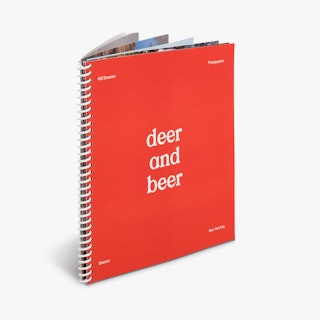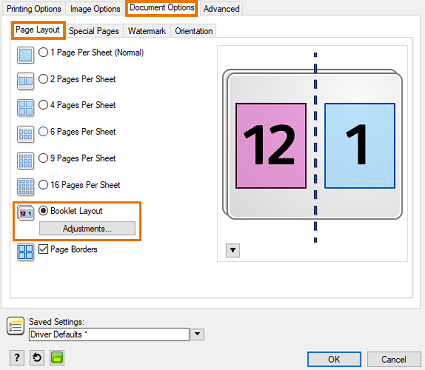The Crucial Overview to Recognizing Booklet Printing Options and Techniques
The process of brochure printing includes multiple considerations that can greatly impact the end product. From selecting the suitable format and size to understanding the subtleties of binding approaches, each option plays a necessary duty. Additionally, variables such as paper supply and printing techniques additional influence the effectiveness of the booklet. As one browses these choices, it comes to be critical to comprehend how they adjoin and what that indicates for the overall end result.
Comprehending Pamphlet Styles and Sizes
When taking into consideration pamphlet printing, understanding the various styles and sizes offered is important for accomplishing the wanted presentation. Pamphlets can be produced in many formats, including saddle-stitched, spiral-bound, and perfect-bound, each offering distinctive advantages. Usual sizes range from standard letter (8.5 x 11 inches) to smaller alternatives like A5 (5.8 x 8.3 inches), allowing for adaptability based on content and target audience.Selecting the proper size can influence both the design and viewers interaction. Bigger sizes may match visually driven content, while smaller sized layouts may be much more mobile and user-friendly. In addition, the number of pages influences the choice of binding method, as thicker brochures might call for sturdier bindings. Ultimately, comprehending these facets enables a more tailored method, making certain that the end product aligns with the designated message and visual, boosting the total performance of the communication.
Choosing the Right Paper Stock

Binding Methods: Choices and Factors To Consider
When it pertains to binding methods for booklets, a number of alternatives are offered, each with distinctive benefits. Saddle stitch binding offers a cost-efficient solution for thinner booklets, while ideal binding strategies give a more polished search for thicker publications. Wire-O binding sticks out for its durability and simplicity of use, making it excellent for records that need versatility.
Saddle Stitch Binding
Saddle stitch binding offers a useful and affordable remedy for setting up pamphlets, making it a prominent choice among authors and organizations. This binding approach entails folding sheets of paper in fifty percent and stapling them along the fold line, developing a cool and orderly appearance. Generally suitable for booklets with a reduced web page count, saddle stitching is perfect for magazines, brochures, and educational products. The simplicity of this technique allows for fast production and is often preferred for brief runs or marketing items. It is vital to note that saddle stitch binding might not be appropriate for thicker booklets, as the back may not hold up under increased weight. Generally, it stays a reputable option for lots of printing projects.
Perfect Binding Strategies
Perfect binding is a commonly used method that offers a sleek and expert coating to magazines and booklets. This approach includes gluing the pages together at the back utilizing a solid adhesive, enabling a tidy edge and the ability to hold a bigger number of web pages compared to saddle stitching. Perfect binding is specifically appropriate for thicker booklets, such as catalogs and yearly records, where a strong, level back is wanted. Furthermore, it supplies the alternative for a published cover that can be created to enhance visual allure. However, factors to consider such as web page matter, paper weight, and the intended use the booklet must be thought about, as they can affect longevity and general top quality.
Wire-O Binding Alternatives
Wire-O binding, recognized for its durability and flexibility, offers an exceptional option for pamphlets that need very easy page transforming and a specialist look. This binding method uses a collection of metal loopholes that hold pages securely, permitting them to lie level when open. It is particularly appropriate for guidebooks, brochures, and discussions due to its durable nature. Wire-O binding is offered in numerous shades and diameters, suiting different page matters and thicknesses. In addition, it allows the inclusion of tabs and covers, enhancing the brochure's total visual. Factors to consider for Wire-O binding include the choice of cable color, the dimension of the loopholes, and the extent of personalization wanted, every one of which can greatly affect the final item's appearance and capability.
Digital vs. Offset Printing: Which Is Best for You?
When selecting Find Out More a printing technique for booklets, comprehending the distinctions between electronic and counter printing is vital. Digital printing utilizes contemporary technology to create high-quality prints swiftly and economically, making it optimal for brief runs or projects needing fast turn-around times. It permits personalization, giving the capacity to print on-demand with minimal waste.In contrast, balance out printing is a typical approach that stands out in producing huge quantities with constant quality. It involves moving ink from a plate to a rubber covering, after that to the paper, which results in vivid shades and precise details. Balance out printing generally calls for longer setup times and is a lot more economical for larger volumes.Ultimately, the option in between digital and offset printing depends on project demands, budget plan, and wanted amount. For small, time-sensitive projects, digital could be the most effective option, while offset may be better for larger, high-quality productions.

Creating Your Booklet: Tips and Best Practices
When developing a booklet, careful focus to format, font option, and shade usage can considerably boost its efficiency. A well-structured design overviews the visitor's eye, while suitable typefaces assure readability and convey the preferred tone. In addition, efficient usage of shade can stimulate feelings and highlight vital information, making the general design a lot more impactful.
Picking the Right Design
Exactly how can one effectively pick the best format for a brochure? It is vital to evaluate the booklet's objective and target audience. A clean, arranged layout boosts readability and involvement. Utilizing a grid system can assist in lining up components regularly, producing a professional appearance. In addition, incorporating aesthetic power structure through differing dimensions and positionings of images and text can direct the viewers's eye and stress vital info. It is also important to leave sufficient white room, which protects against congestion and enables better focus. Lastly, evaluating different formats via mock-ups can offer insight right into how the layout carries out in real-world scenarios, making sure that the end product satisfies both practical and aesthetic requirements.
Selecting Proper Fonts
An appropriate typeface can considerably enhance the general design of a booklet, enhancing the layout and reinforcing the web content's message. The selection of typefaces need to take into consideration readability, specifically for body text, as it guarantees the information is available to all viewers. Sans-serif typefaces are usually liked for electronic formats, read more while serif font styles can offer a standard feel in printed products. It's a good idea to restrict font selections to 2 or 3 to keep aesthetic coherence. Additionally, font size plays an important duty; headings must be not overwhelming yet unique, while body message need to be comfortable for reading. When picking font styles, alignment with the booklet's style and target market is crucial for reliable communication and visual charm.
Efficient Usage of Color
Shade works as an effective device in booklet style, guiding and shaping perceptions reader feelings. It can stimulate feelings of calmness, trust fund, or excitement, depending upon the hues picked. Developers need to take into consideration color concept principles, ensuring that the picked combination straightens with the pamphlet's message and target audience. Making use of cozy colors like red and orange can create urgency, while cooler tones like blue and green foster tranquility.Additionally, contrast plays an important role; complementary colors can boost readability and visual allure. Uniformity in shade usage across pages additionally strengthens brand identity and cohesion. Eventually, effective color implementation not only records attention but additionally reinforces the brochure's objective, making it a crucial facet of effective layout.
Completing Touches: Coatings and Unique Results
While lots of take into consideration the web content and format of a brochure the most crucial components, the finishing touches, such as layers and special effects, play an important function in improving its general charm. Coatings can provide defense and resilience, guaranteeing that the pamphlet stands up to wear and tear. Matte coatings supply an advanced, non-reflective surface area, while shiny finishes can make shades appear more attractive and dynamic. Special results, like embossing or foil marking, include a responsive dimension that can create a remarkable perception. These strategies can highlight certain locations, accentuating vital info or creating aesthetic interest. In addition, UV finishing can provide a high-shine surface that elevates the general look.Together, these finishing touches not only boost the brochure's visual however additionally communicate professionalism and reliability and focus to information, eventually leaving a lasting influence on the reader.
Expense Factors To Consider for Booklet Printing
Comprehending the numerous cost factors to consider for pamphlet printing is vital for companies and organizations aiming to enhance their spending plans. Trick elements affecting prices consist of the choice of ink, paper, and binding techniques. Better materials, such as superior paper or specialized inks, normally increase the general cost. Furthermore, the dimension and web page matter of the booklet play a considerable function; bigger brochures call for even more sources and time to produce.Another crucial consideration is the printing strategy, whether electronic or countered, as each has its own pricing structure and suitability for different quantities. Companies ought to likewise factor in design costs, which can vary based upon intricacy and making use of professional solutions. Inevitably, delivery and handling costs can include in the total amount, specifically for huge orders. By reviewing these components, companies can make enlightened choices that line up with their monetary abilities while achieving the desired quality in their published products.
Often Asked Concerns
What Are the Environmental Impacts of Pamphlet Printing?
The ecological effects of brochure printing include logging from paper manufacturing, carbon exhausts from transport, and waste generation from discarded materials - Booklet Printing. Lasting techniques, such as utilizing recycled paper and green inks, can alleviate these impacts
How Can I Ensure Shade Precision in My Brochure?
To guarantee shade precision in a brochure, one should make use of adjusted monitors, use expert color accounts, carry out test prints, and select high-quality printing solutions that provide shade matching and proofing choices for best outcomes.
What Is the Normal Turnaround Time for Pamphlet Printing?
The common turn-around time for brochure printing differs depending upon the complexity and amount - Booklet Printing. Generally, it varies from a few days to 2 weeks, affected by elements such as publishing techniques and ending up demands
Exist Minimum Order Quantities for Brochure Printing?

Can I Publish Pamphlets in Numerous Languages?
Printing booklets in multiple languages is possible. Lots of printing solutions supply options for multilingual or bilingual formats, permitting reliable interaction. Careful planning guarantees that develop aspects fit different languages without endangering readability or visual appeals. Additionally, elements such as paper stock and printing methods further influence the efficiency of the booklet. When thinking about brochure printing, understanding the various layouts and sizes offered is crucial for achieving the go to my blog preferred discussion. When choosing a printing technique for pamphlets, recognizing the differences between digital and balance out printing is necessary. Additionally, the size and web page matter of the pamphlet play a significant role; larger brochures need more resources and time to produce.Another vital factor to consider is the printing method, whether digital or offset, as each has its very own prices structure and viability for various quantities. The ecological influences of brochure printing consist of logging from paper production, carbon emissions from transport, and waste generation from thrown out materials.